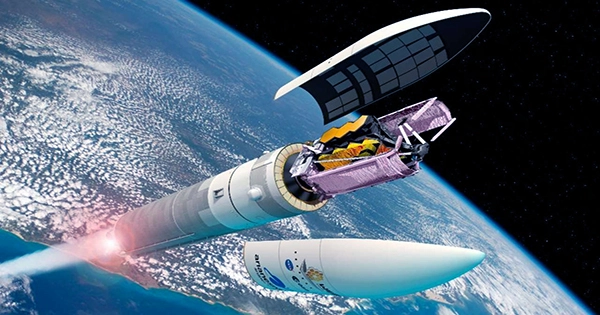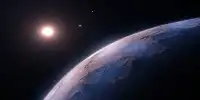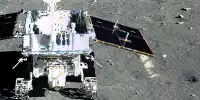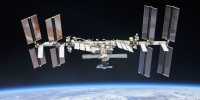We’ve now gotten our first look at the imaging capabilities of the James Webb Space Telescope, and it’s a “selfie,” sort of. The fuzzy self-portrait was taken by a special “inward-looking” lens that’s there to help scientists on Earth calibrate the probe’s high-powered reflectors as it prepares to be fully operational, according to the NASA Webb Telescope’s Twitter account.
Even cooler: the bright mirror segment is aligned directly with the star that the JWST is now monitoring, as NASA points out. “We will be aligning each mirror segment individually over the following 3 months so that all 18 reflections of this star are properly overlayed until the telescope only sees a single, focused light,” the account says.
HD 84406 is the star in question, according to NASA’s website. HD84406 “was chosen precisely because it is easily recognized and not cluttered by other stars of similar brightness, which helps to eliminate background confusion,” according to the researchers. According to NASA, the process of getting these initial outward-facing photographs produced 54 gigabytes of raw data, but scientists were able to “identify the target star in each of its mirror parts within the first six hours and 16 exposures.”
While amazing, space selfies like this one aren’t uncommon. China’s Mars craft snapped a self-portrait as it orbited the red planet in early January 2022, and NASA’s Curiosity Mars Rover took a selfie with itself looking like Wall-E while posing on a mountain last year. Oh, and don’t forget that after they got to their destination, China’s adorable-looking rover took a selfie of itself standing with the country’s lander.
Astronauts have also been known to shoot selfies while out among the stars, dating back to 1966 when legendary spacewalker Buzz Aldrin captured an iconic shot of himself with the Earth in the background. This interstellar selfie from Webb, on the other hand, is unique in that it’s one of the new telescope’s first views — and it lets viewers see part of the long-awaited orbital observatory’s mechanical workings. We’ll no sure see more “selfies” as the JWST and its earthbound operators continue to calibrate its optics over the next year and a half — and maybe it’ll learn its angles a little better, too.















